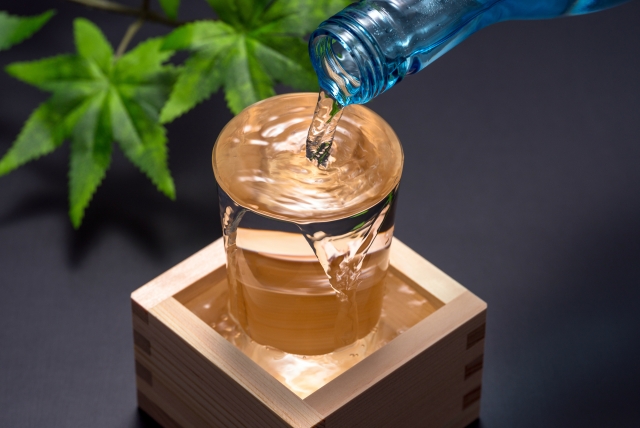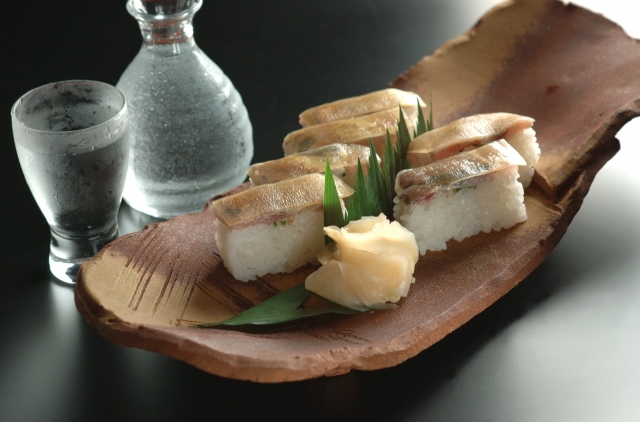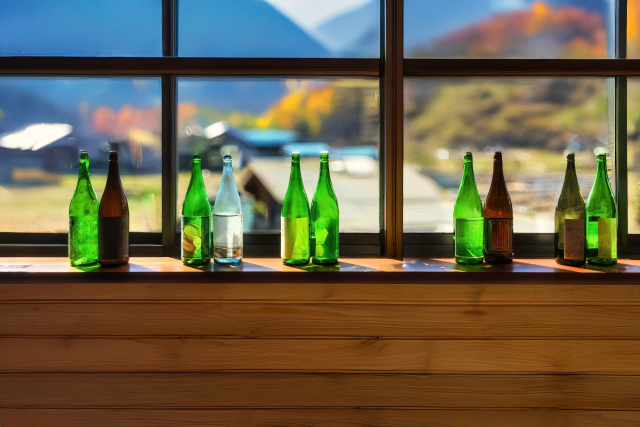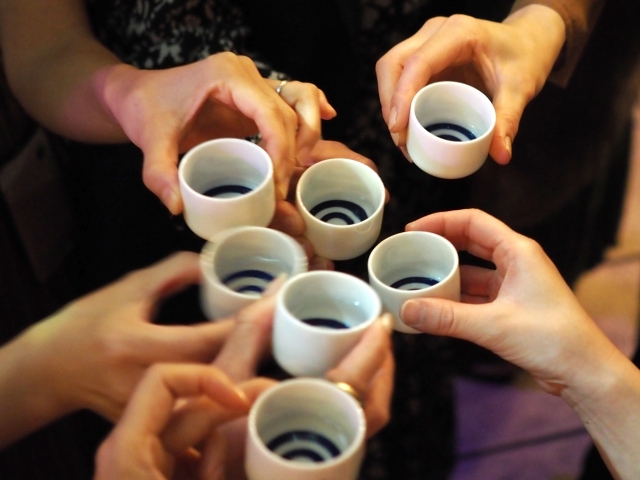
Choosing delicious and healthy sake can enhance your enjoyment and appreciation of this traditional Japanese beverage. Based on your interest and the historical sake brewery in your area, here’s a guide to understanding and selecting sake, particularly focusing on junmai sake, which is known for its purity and natural flavors.
Sake can be broadly categorized into different types, primarily based on the ingredients and brewing process. Here are the main categories:
The rice polishing ratio indicates how much of the rice grain remains after polishing. This ratio significantly influences the sake’s flavor and quality.
Junmai sake uses only rice, water, and koji, without any added alcohol, allowing you to taste the true essence of the ingredients. The complex flavors and umami of the rice come through clearly.
With no additives, junmai sake offers a natural and unadulterated taste. The flavor can vary significantly based on the rice variety, region, polishing ratio, and yeast used, offering a wide range of experiences.
Junmai sake pairs exceptionally well with food, particularly Japanese cuisine like sashimi, simmered dishes, and grilled fish. It also complements Western and Chinese dishes, making it a versatile choice for various meals.
Junmai sake’s flavor profile varies with the polishing ratio:
Junmai sake can be enjoyed both chilled and warm. Chilled junmai sake is refreshing and crisp, while warmed junmai sake brings out deeper umami and complexity. This versatility allows you to enjoy junmai sake throughout the year and with various dishes.
Junmai sake is popular among health-conscious consumers as it contains no additives. The natural brewing process ensures a pure and clean beverage.
Junmai sake offers a unique and natural way to experience the rich heritage of Japanese sake brewing. Its diverse flavors, health benefits, and versatility make it a delightful choice for both connoisseurs and casual drinkers. Enjoy exploring the different types of junmai sake from your local brewery and discovering the rich tapestry of flavors they offer.

The most notable characteristic of ginjo sake is its fruity and fragrant aroma. The special brewing method called “ginjo-zukuri” brings out scents reminiscent of banana, apple, and melon. This rich aroma, known as “ginjo-ka” (吟醸香), is highly appealing. During fermentation, the yeast releases alcohol and carbon dioxide, which contain components that create these fruity aromas.
Ginjo sake uses rice polished to 60% or less, removing unnecessary elements and highlighting the pure umami of the rice. The result is a delicate and elegant flavor with a light, smooth texture.
Ginjo sake is brewed at low temperatures for extended periods, a process known as ginjo-zukuri. This method requires meticulous attention to detail, including strict control of temperature and humidity during brewing, resulting in high-quality sake. Therefore, ginjo sake represents the craftsmanship and dedication of the brewers.
Ginjo sake also has an attractive, transparent appearance. It often has a clear and glossy look, making it visually appealing when poured into a glass. This visual beauty adds to the special experience of enjoying ginjo sake.
Ginjo sake is typically enjoyed chilled, but it can also be served on the rocks. Its fruity aroma and refreshing taste make it perfect for hot weather. Additionally, ginjo sake pairs well with a variety of cuisines, including Western and Chinese dishes, providing a versatile drinking experience.
Due to its high quality and elegant aroma, ginjo sake is popular for special occasions and celebrations. It makes an excellent gift and is well-suited for festive events and hospitality settings. These characteristics make ginjo sake highly valued by sake enthusiasts for its unique flavor and aroma.
Brewing alcohol, added during the production process, is made from fermented materials like molasses, corn, sugarcane, or sweet potatoes and consists mainly of ethanol. Brewing alcohol became common during the Edo period, particularly when rice shortages made it necessary to produce sake more efficiently and economically.
The addition of brewing alcohol offers benefits like adjusting aroma and flavor, improving preservation, and enhancing production efficiency. The presence or absence of brewing alcohol significantly influences the taste and characteristics of the sake, catering to consumer preferences.
Honjozo sake includes a small amount of brewing alcohol, resulting in a lighter, easier-to-drink beverage. It has a well-balanced taste with a clean finish, balancing acidity, sweetness, bitterness, and umami.
Honjozo sake is often more affordable than higher-end sakes like junmai ginjo or junmai daiginjo. Its high quality and reasonable price make it suitable for everyday enjoyment.
Honjozo sake can be enjoyed both chilled and warmed. Chilled honjozo sake highlights its clean taste, while warmed honjozo sake enhances its umami, making it versatile for different seasons and moods.
The balanced flavor of honjozo sake pairs well with many dishes, especially Japanese cuisine like grilled fish, simmered dishes, and tempura. It complements a wide range of meals, making it a versatile choice.
Honjozo sake maintains traditional sake brewing methods while adding brewing alcohol to ensure consistent quality. This results in a reliable and enjoyable beverage.
Honjozo sake is produced by many breweries, offering a wide range of options. Each region’s unique characteristics are reflected in their honjozo sake, making it enjoyable to explore different local varieties.
Honjozo sake often features straightforward and approachable label designs, making it easy for beginners to choose and enjoy. It is also a great gift choice due to its clear and simple labeling.
These types of sake differ based on production methods, ingredients, and polishing ratios, each offering unique flavors and aromas. Choosing the right sake depends on the occasion, pairing with food, and personal preferences. Enjoy exploring the diverse world of sake!

When considering health benefits, “Junmai Sake” (純米酒) is generally regarded as the healthiest type of sake. The reasons for this include:
Junmai sake is made solely from rice, water, and koji (rice mold). It does not contain added brewing alcohol or other additives, making it a more natural and pure form of sake.
Junmai sake contains a high amount of amino acids produced during the fermentation process. Amino acids are essential for various bodily functions, including muscle repair and immune system support.
Because junmai sake uses only rice and koji, it retains many vitamins and minerals. It is particularly rich in B vitamins, calcium, and magnesium, which contribute to overall health maintenance.
Compared to other alcoholic beverages, junmai sake tends to have lower calories and sugar content. This helps to avoid excessive calorie intake and prevents rapid spikes in blood sugar levels.
The enzymes produced during the fermentation process of junmai sake aid in digestion. Consuming junmai sake with meals can help promote digestion and support gastrointestinal health.
While junmai sake offers health benefits, it is crucial to consume it in moderation. Excessive drinking can have negative health effects. It is generally recommended to limit sake consumption to 1-2 servings per day (approximately 180-360ml).
Due to these factors, junmai sake is considered a healthier option. However, it is important to choose a drinking pattern that suits your individual health and body.
Modern Japanese lifestyles have become more diverse and busy, leading to a preference for easily accessible beverages like beer and chu-hai (shochu highballs). These drinks are convenient, easy to find, and often have lower alcohol content, making them more appealing for quick and casual consumption.
Younger generations are drinking less alcohol overall due to increased health consciousness and changing attitudes towards drinking. Additionally, there are more non-alcoholic alternatives like soft drinks and non-alcoholic beers available.
The diversification of dietary habits has also influenced sake consumption. Western and Chinese cuisines have become more popular, and the alcoholic beverages that pair well with these foods, such as wine and beer, are often chosen over sake. While sake pairs excellently with traditional Japanese cuisine, it may not be selected as often with other types of food.
Sake sometimes carries the image of being a “strong drink” or an “older generation’s drink,” which can deter younger consumers. The unique aroma and taste of sake can also be challenging for beginners.
Sake production is relatively costly, and it often requires careful storage, typically in refrigeration. The short shelf life after opening can make it less convenient to keep at home compared to other alcoholic beverages.
The market is saturated with a wide variety of alcoholic drinks, including beer, wine, whiskey, chu-hai, and cocktails. This extensive selection provides consumers with many alternatives, leading some traditional sake drinkers to try other options.
Compared to other alcoholic beverages, sake advertising and marketing efforts are relatively minimal. This lack of promotion, especially towards younger demographics, makes it challenging to attract new consumers and grow a fan base.
These factors combined have contributed to the decline in sake consumption within Japan. However, efforts are underway to rekindle interest in sake, including promoting its appeal to younger audiences and highlighting its unique qualities.

Share the stories behind sake, including its history, brewing methods, and the dedication of the brewers. Highlighting the unique aspects of different sake breweries and their connections to local culture and specialties can create a deeper understanding and emotional connection for consumers.
Organize tasting events and sake festivals where consumers can sample various types of sake. These events allow people to discover their preferences and learn about sake’s characteristics and how to enjoy it, often guided by experts.
Promote the pairing of sake with various foods, especially beyond traditional Japanese cuisine. Suggest specific menus and matching sake, making it easier for people to experiment and enjoy sake at home with different types of dishes.
Utilize social media platforms like Instagram, Facebook, and Twitter to share the appeal of sake, featuring beautiful bottle designs and tasting experiences. Collaborate with influencers and celebrities to reach a younger audience effectively.
Offer educational programs and workshops to deepen consumers’ knowledge about sake. Brewery tours, sake-making experiences, and classes can enhance understanding and appreciation, fostering a stronger connection to sake.
Adopt contemporary and stylish bottle designs and packaging to attract new generations. High-end designs for gifts or special occasions can also enhance sake’s appeal.
Emphasize the health benefits of sake, such as its natural ingredients, amino acids, and vitamins, especially in junmai sake. Promote the relaxation effects of moderate consumption and its natural production process.
Increase the global awareness of sake by promoting its appeal internationally. Participate in overseas promotions and events, and increase the presence of sake in restaurants and bars worldwide to grow a broader fan base.
Collaborate with fashion brands, artists, and musicians to reach a wider audience. Such collaborations can refresh the image of sake and attract new fans through cultural intersections.
Offer products in convenient formats, such as small bottles or cups, making it easier for consumers to enjoy sake in everyday life. Online sales and subscription services can also increase accessibility.
Combining these strategies can help maximize sake’s appeal, making it more accessible and attractive to a diverse range of consumers.
I am a sake enthusiast. Nowadays, it’s common to find sake even here in New Zealand, and it’s enjoyed worldwide.
However, I believe that truly delicious and healthy sake can only be fully appreciated in Japan, especially near the breweries where it’s made.
For example, unpasteurized junmai sake (nama genshu) can change in flavor due to fermentation if not stored properly, so it’s rarely sold widely.
I also enjoy eating brown rice. Therefore, I prefer junmai sake with a rich rice flavor and a higher milling rate that keeps it closer to its natural state.
I now understand why they gave up other types of sake, such as honjozo, in favor of junmai sake. This realization came from the website of my local Kawanishiya Brewery.
At Kawanishiya, brewing is a hands-on, traditional process. The brewers see it as nurturing the sake rather than just a task. We believe that delegating the process to machines would strip away the essence of Kawanishiya sake. The people who understand this philosophy come together to create our sake.
Traditional breweries, with their quiet yet significant presence, always intrigue me. I look forward to visiting them next time I return to Japan.